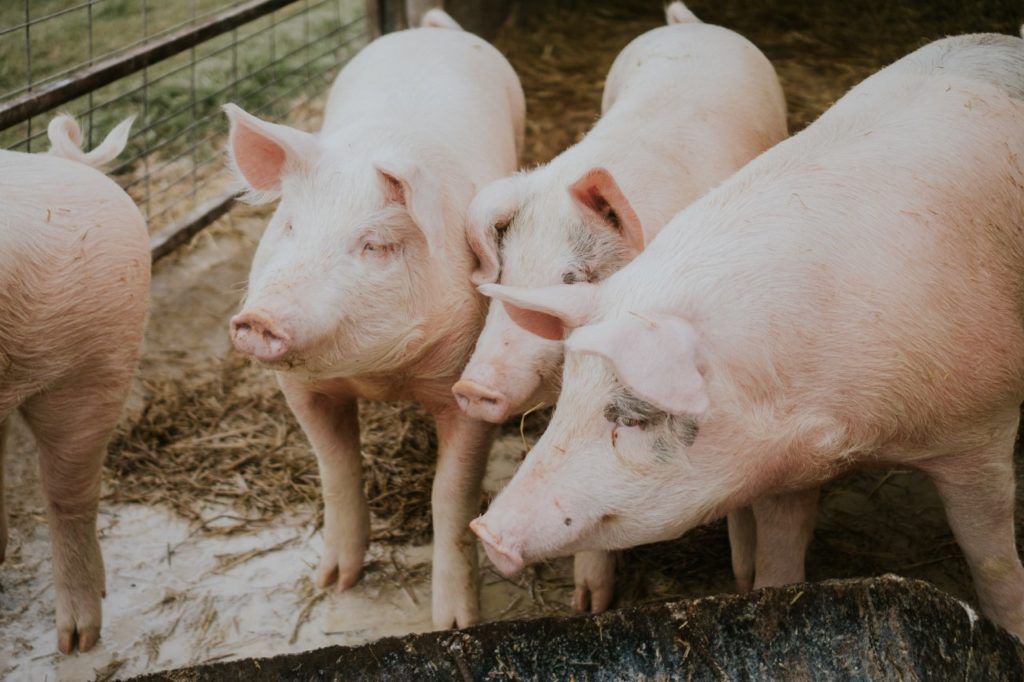Large Or Small – Why Every Pig Keeper Has A Big Role To Play In Keeping Disease Out
5 August 2022The recent suspected case of Foot and Mouth Disease (FMD) in Norfolk has served as a timely reminder to pig producers large and small to maintain strict biosecurity protocols, and if necessary, review and improve current measures. Although FMD was subsequently not found, and ruled out along with Swine Vesicular Disease (SVD), the continued movement of African Swine Fever (ASF) westwards across Europe combined with minimal border controls in the UK has meant that pig producers and keepers must be proactive in preventing the incursion of diseases into their herds and remain vigilant.
Taking the time to review your farm’s current external biosecurity measures reduces the risk of diseases and pathogens being introduced to the farm. These can take the form of some of the more benign endemic conditions that erode productivity to the more exotic and epidemic diseases which can be devastating to not only the individual herd but the wider national pig sector.
Biosecurity is not something that can ever be taken for granted and the old adage “prevention is better than cure” holds true. Many of the measures discussed are fairly cheap to implement- for both large and small producer alike. So what areas should pig farmers and keepers consider when assessing their own biosecurity?
People
This includes all staff and visitors to the unit or farm with humans capable of acting as a disease vector. An example of this is the “jumps” seen in ASF spread across Europe, with humans and their actions thought to be the most likely cause.
- Clean clothing and footwear (PPE) and ideally showering facilities should be provided before entering the pig area. Disinfectant footbaths should also be provided.
- Visitors should be by appointment only with records kept confirming that they have been “pig free” for at least 48 hours or more depending on disease status.
- Food storage and consumption should be restricted to a defined kitchen or canteen area, away from the pigs and strictly no pork products should be taken onto or consumed on farm. Remember – it is illegal to feed pigs kitchen or catering waste with the 2001 Foot and Mouth outbreak thought to have originated from this source.
- In outdoor situations, signs should be erected to advise that walkers and other members of the general public must not feed or touch the pigs and that biosecurity measures are in place.
Pests
By their nature, pig farms can attract unwanted pests and vermin. These can also spread disease from farm to farm.
- Make sure pest control measures are up to date and buildings as secure as possible. Outdoors, birds can be a major problem and can bring disease onto farm so the use of scarers and other methods should be considered where possible.
- Feed stores can be a haven for birds and other animals so doors should be kept shut where possible or mesh screens used to prevent access and contamination. Feed stored outdoors should be kept in bins or covered to prevent ingress and contamination.
Boundaries
Stopping unauthorised incursions by animals, humans or vehicles is key to keeping disease out, although clearly there can be a need for access and these areas need to be controlled.
- Check perimeter fences regularly and provide telephone contact numbers with signage to highlight biosecurity measures.
- Review activities whereby vehicles need to access the unit or farm- can these take place out with the site and buildings e.g. collection of dead pigs, deliveries of semen etc. Could feed bins be moved to the outside of the unit with feedlines taking moving it through the unit etc?
- All vehicles and equipment should be thoroughly cleaned and disinfected prior to coming onto farm.
Stock and Semen
Disease can be spread from pig to pig in many ways including direct contact, excreta or even transmitted in semen.
- New stock should be placed in quarantine away from the main farm for at least 8 weeks and again separate clothing and footwear should be worn. Up to date vet reports and even slaughter sheets can provide valuable information relating to the health status of the supplier’s herd.
- In the same way, the semen suppliers should provide vet reports for the boar stud.
The Role of YourVet
- Your vet plays a key role in managing the health of your herd. They also have the advantage of acting as a fresh pair of eyes that can evaluate your current biosecurity measures and make suggestions for improvement. They can also look at quarantine facilities and practices.
These measures have looked at some of the main external biosecurity measures, that is preventing disease entering your herd. Internal biosecurity within your unit or farm should also be reviewed. When effectively applied in tandem, these measures not only help reduce disease but can also help improve pig performance.
For larger commercial herds many of these measures will be undertaken as a matter of course however for those with small numbers of pigs, looking at these measures and asking how they could be applied to their own farm where possible, could pay big dividends by preventing the incursion of disease into their herd. Even adding some simple signage and tightening visitor and vehicle measures can be a big step in the right direction. In doing so they are not only protecting their own herd but also doing their bit to help protect the wider UK pig herd.
George Chalmers, george.chalmers@sac.co.uk
Sign up to the FAS newsletter
Receive updates on news, events and publications from Scotland’s Farm Advisory Service

